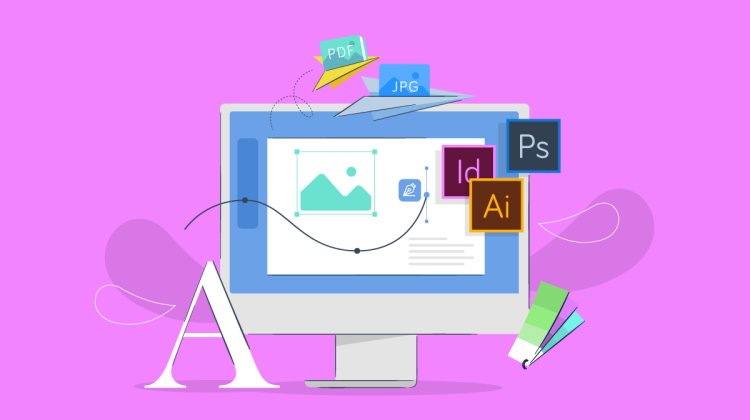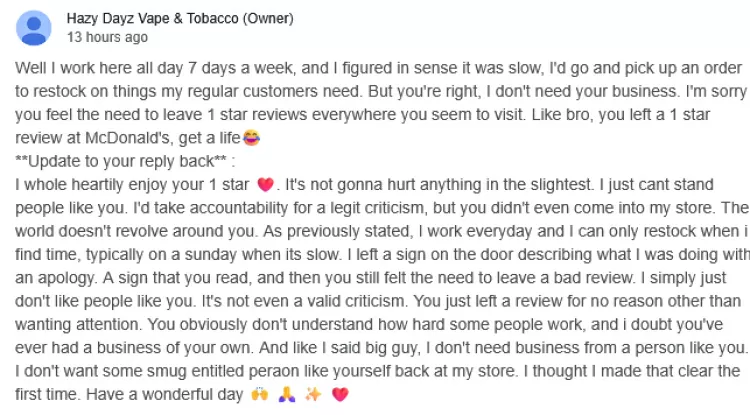The Ultimate Guide to Launching Your Graphic Design Career

Are you passionate about visual communication, design aesthetics, and creative expression? Do you have an eye for detail and an insatiable urge to turn your artistic talents into a rewarding career? If you've answered yes to these questions, then a career in graphic design might be your calling.
Graphic design is a versatile and ever-evolving field that plays a crucial role in today's digital age. From branding to advertising, web design to illustration, there are endless opportunities for talented graphic designers. This comprehensive guide will take you through the steps to start a successful graphic design career. Whether you're just starting or looking to revamp your skills, we've got you covered.
Table of Contents
-
Understanding the Basics
- 1.1 What is Graphic Design?
- 1.2 The Role of a Graphic Designer
- 1.3 The Importance of Graphic Design
-
Gearing Up: Education and Training
- 2.1 Formal Education vs. Self-Learning
- 2.2 Choosing the Right Design Program
- 2.3 Building a Strong Portfolio
-
Essential Tools of the Trade
- 3.1 Graphic Design Software
- 3.2 Hardware and Equipment
- 3.3 Stock Resources
-
Mastering the Art of Design
- 4.1 Graphic Design Principles
- 4.2 Color Theory and Psychology
- 4.3 Typography Fundamentals
-
Exploring Different Specializations
- 5.1 Web Design
- 5.2 Logo Design
- 5.3 Print and Editorial Design
- 5.4 UX/UI Design
- 5.5 Illustration
-
Building a Strong Online Presence
- 6.1 Creating a Personal Brand
- 6.2 Setting Up an Online Portfolio
- 6.3 Social Media and Networking
-
The Freelancer's Journey
- 7.1 Pros and Cons of Freelancing
- 7.2 Finding Clients
- 7.3 Pricing Your Services
- 7.4 Legal and Contractual Matters
-
Working In-House or for Agencies
- 8.1 Pros and Cons of In-House Work
- 8.2 Applying for Design Agencies
- 8.3 Navigating Corporate Design
-
Keeping Up with Trends
- 9.1 Staying Current in the Industry
- 9.2 Lifelong Learning and Skill Enhancement
-
Resources and Tools
- 10.1 Online Courses and Tutorials
- 10.2 Design Communities and Forums
- 10.3 Books for Graphic Designers
- 10.4 Conferences and Workshops
-
Conclusion: Your Graphic Design Journey Begins Now
Chapter 1: Understanding the Basics
1.1 What is Graphic Design?
Graphic design is the art and practice of creating visual content to communicate messages, ideas, or information. It encompasses a wide range of creative activities, including the design of logos, brochures, websites, advertisements, posters, and more. Graphic designers use various elements, such as typography, color, imagery, and layout, to convey their message effectively.
1.2 The Role of a Graphic Designer
A graphic designer's role is not limited to making things look aesthetically pleasing; it's about problem-solving. Designers collaborate with clients or stakeholders to understand their goals and create visual solutions that engage, inform, and inspire the target audience. In essence, a designer is a visual storyteller.
1.3 The Importance of Graphic Design
Graphic design is integral to almost every aspect of modern life, from the packaging of your favorite products to the websites you visit daily. It influences how we perceive brands, make purchase decisions, and interact with information. In today's visually-driven world, graphic design is more critical than ever.
Chapter 2: Gearing Up - Education and Training
2.1 Formal Education vs. Self-Learning
One of the first decisions you'll need to make is whether to pursue formal education in graphic design or opt for a self-taught approach. We'll discuss the pros and cons of each path and provide guidance on choosing the right one for you.
2.2 Choosing the Right Design Program
If you decide to pursue formal education, selecting the right design program is crucial. We'll discuss factors to consider when choosing a college or university and explore alternatives like online courses and bootcamps.
2.3 Building a Strong Portfolio
No matter your educational background, a strong portfolio is your ticket to a successful career. We'll provide tips on creating and curating a portfolio that showcases your skills and style.
Chapter 3: Essential Tools of the Trade
3.1 Graphic Design Software
An overview of essential software tools, including Adobe Creative Cloud applications like Photoshop, Illustrator, and InDesign. We'll also explore free and open-source alternatives for those on a budget.
3.2 Hardware and Equipment
The hardware you choose, including computers, tablets, and peripherals, can significantly impact your workflow. We'll guide you through making the right choices.
3.3 Stock Resources
Stock photos, vectors, and fonts can save you time and money. We'll recommend some of the best resources for high-quality stock assets.
Chapter 4: Mastering the Art of Design
4.1 Graphic Design Principles
Understanding design principles like balance, contrast, hierarchy, and repetition is fundamental to creating effective designs. We'll dive deep into these principles and how to apply them.
4.2 Color Theory and Psychology
The importance of color in design cannot be overstated. We'll explore color theory, color harmonies, and the psychology of color to help you make informed choices.
4.3 Typography Fundamentals
Typography plays a significant role in design. We'll discuss the basics of typography, fonts, and how to make text visually appealing and readable in your designs.
Chapter 5: Exploring Different Specializations
5.1 Web Design
Web design is a booming field with its own set of principles and tools. We'll cover web design basics, responsive design, and the software used in this specialization.
5.2 Logo Design
Logo design is a cornerstone of branding. Learn the art of creating logos that are memorable and meaningful.
5.3 Print and Editorial Design
Print design covers everything from brochures to magazines. We'll explore the unique challenges and opportunities in this specialization.
5.4 UX/UI Design
User experience (UX) and user interface (UI) design are critical for digital products. We'll discuss the differences between these two fields and how to get started.
5.5 Illustration
If you have a passion for drawing, illustration might be your niche. We'll provide tips on developing your illustration skills and turning them into a career.
Chapter 6: Building a Strong Online Presence
6.1 Creating a Personal Brand
Building a personal brand is essential for standing out in the competitive world of graphic design. We'll discuss how to define your brand and communicate it effectively.
6.2 Setting Up an Online Portfolio
Your online portfolio is your digital showroom. We'll guide you through the process of creating a stunning online portfolio that attracts clients and employers.
6.3 Social Media and Networking
Effective networking and social media presence can open doors in the design industry. We'll provide strategies for connecting with fellow designers and potential clients.
Chapter 7: The Freelancer's Journey
7.1 Pros and Cons of Freelancing
Freelancing offers independence and flexibility but comes with its own set of challenges. We'll explore the pros and cons and help you decide if freelancing is the right path for you.
7.2 Finding Clients
One of the biggest challenges for freelancers is finding clients. We'll share strategies for securing clients and building a steady stream of work.
7.3 Pricing Your Services
Setting the right price for your design services can be tricky. We'll provide insights on pricing strategies and how to ensure you're compensated fairly.
7.4 Legal and Contractual Matters
Freelancers need to be well-versed in legal matters, including contracts, copyright, and taxes. We'll offer guidance on navigating these complexities.
Chapter 8: Working In-House or for Agencies
8.1 Pros and Cons of In-House Work
Working in-house or for design agencies has its own advantages and disadvantages. We'll discuss what to expect in these roles.
8.2 Applying for Design Agencies
Tips on crafting a compelling design portfolio and resume for agency positions, as well as preparing for interviews and the application process.
8.3 Navigating Corporate Design
Designing for corporations often involves different considerations. We'll provide insights on creating corporate design materials and working within company guidelines.
Chapter 9: Keeping Up with Trends
9.1 Staying Current in the Industry
The design industry evolves rapidly. We'll discuss strategies for staying up-to-date with the latest design trends, tools, and technologies.
9.2 Lifelong Learning and Skill Enhancement
A career in graphic design is a continuous learning journey. We'll explore resources and strategies for ongoing skill development.
Chapter 10: Resources and Tools
10.1 Online Courses and Tutorials
A curated list of online courses and tutorials to enhance your design skills.
10.2 Design Communities and Forums
Joining design communities and forums can help you connect with other designers, share experiences, and learn from peers.
10.3 Books for Graphic Designers
A collection of must-read books for graphic designers at all stages of their careers.
10.4 Conferences and Workshops
Attending design conferences and workshops is a fantastic way to learn, network, and find inspiration. We'll highlight some of the top events in the design industry.
Chapter 11: Conclusion: Your Graphic Design Journey Begins Now
In this concluding chapter, we'll sum up the key takeaways and encourage you to embark on your graphic design journey. Whether you're starting from scratch or looking to advance your career, this guide is your roadmap to success in the dynamic and creative world of graphic design.
What's Your Reaction?
















